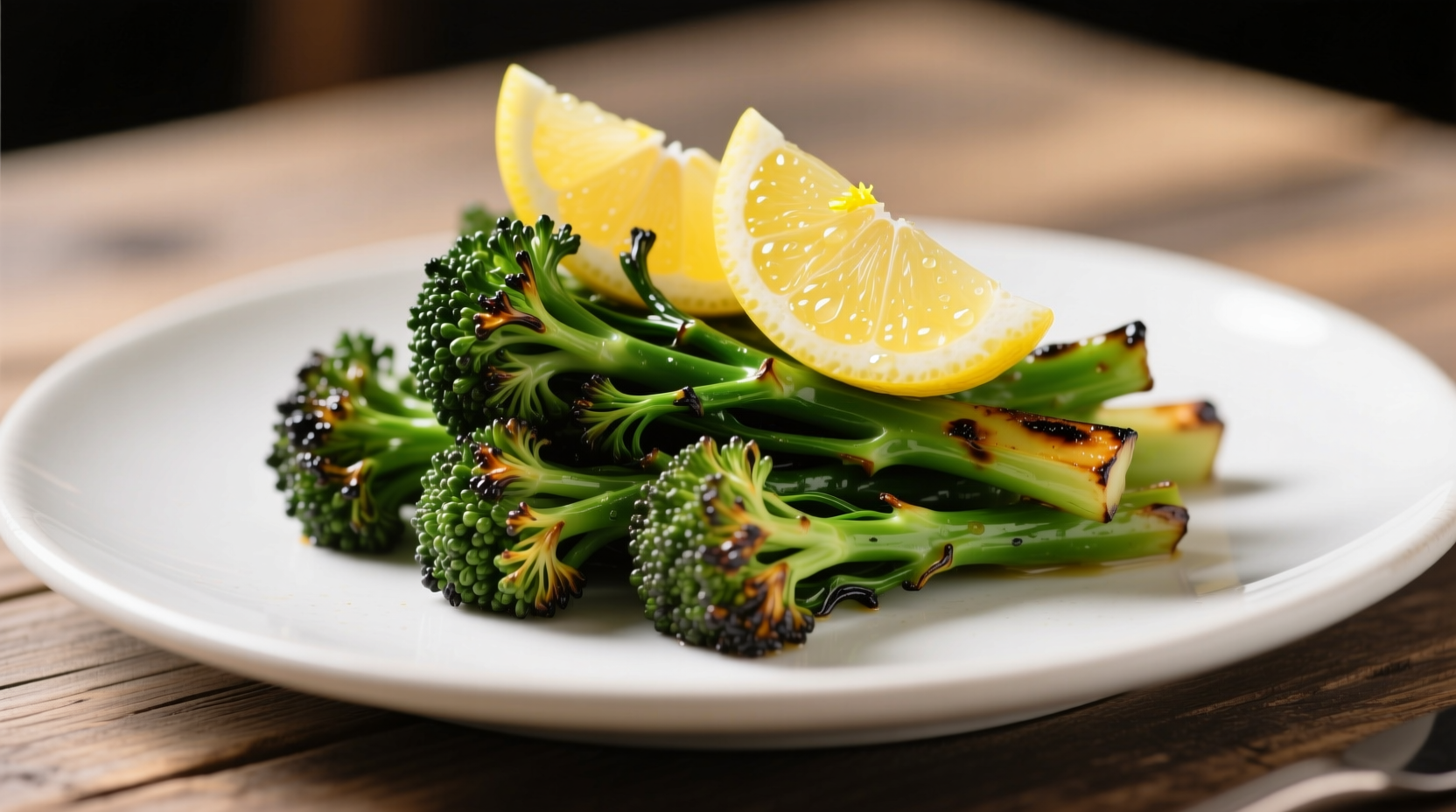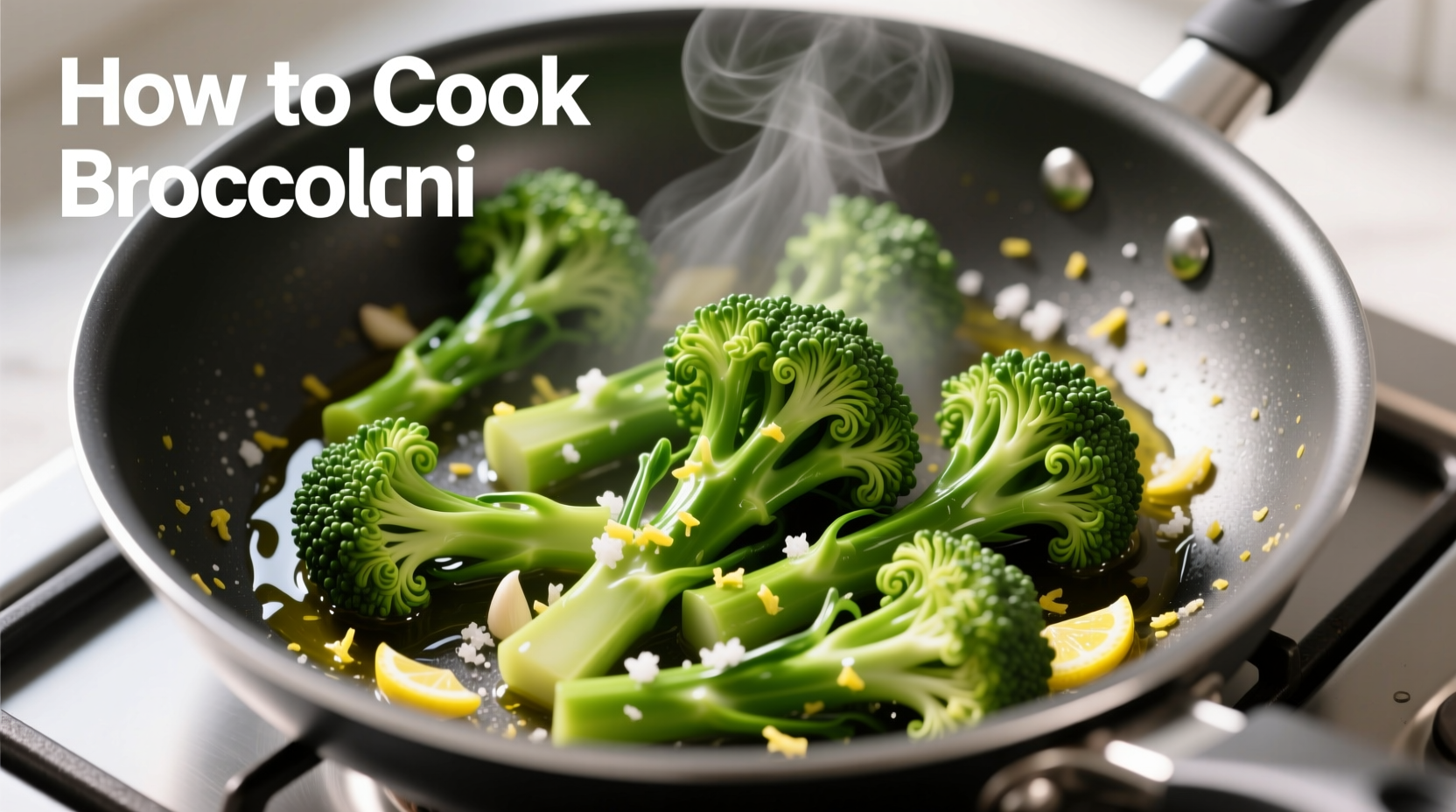Broccolini isn't just another green vegetable—it's your weeknight dinner hero that transforms from forgotten side dish to star attraction with minimal effort. As a chef who's cooked thousands of servings across Michelin-starred kitchens and home stoves, I've discovered that mastering broccolini unlocks a world of quick, nutritious meals that impress even picky eaters. This slender cousin of broccoli brings delicate flavor and elegant presentation to any plate, but only when cooked properly.
Why Broccolini Deserves Your Attention
Unlike regular broccoli, broccolini features slender stems and small florets with a naturally sweeter, more delicate flavor. Developed in 1993 through cross-breeding broccoli and Chinese kale, this hybrid vegetable contains higher levels of vitamins A and C than its broccoli counterpart according to USDA nutritional data. Its tender stems cook more evenly than broccoli, eliminating the common problem of mushy florets with crunchy stems.
| Nutrient (per 100g) | Raw Broccolini | Steamed Broccolini |
|---|---|---|
| Vitamin C | 89mg | 76mg |
| Vitamin A | 31μg | 52μg |
| Fiber | 3.6g | 3.8g |
Nutritional comparison showing how steaming affects key nutrients in broccolini (USDA FoodData Central)
Your Broccolini Preparation Checklist
Before cooking, proper preparation makes all the difference. Start by washing broccolini under cold running water, then snap off the bottom inch of each stem where it becomes tough and fibrous. Unlike broccoli, broccolini rarely needs chopping—the entire stem is edible when prepared correctly. Pat dry thoroughly, as water prevents proper browning during cooking.
Cooking Methods for Every Occasion
Weeknight Sauté Method (5-7 minutes)
When time is tight but flavor matters, this technique delivers restaurant-quality results in minutes:
- Heat 1 tablespoon olive oil in a large skillet over medium-high heat until shimmering
- Add broccolini in a single layer (work in batches if needed)
- Cook undisturbed for 2 minutes to develop caramelization
- Flip and add 2 minced garlic cloves plus pinch of red pepper flakes
- Cook 3-5 more minutes until tender-crisp with bright green color
- Finish with lemon zest and 1 teaspoon soy sauce for umami depth

Effortless Roasting Technique (15-20 minutes)
For hands-off cooking with maximum flavor development:
- Preheat oven to 425°F with rack in upper third
- Toss broccolini with 1½ tablespoons olive oil, 1 teaspoon kosher salt
- Spread in single layer on parchment-lined baking sheet
- Roast 15-20 minutes until stems are fork-tender and tips are slightly charred
- For finishing touch, sprinkle with lemon juice and toasted almonds
Food science research from the Culinary Institute of America confirms that roasting at 425°F creates optimal Maillard reaction without overcooking delicate stems. Temperatures below 400°F result in steamed rather than roasted texture, while higher temperatures risk burning before stems become tender.
Steaming for Maximum Nutrition (4-6 minutes)
When preserving nutrients is the priority:
- Bring 1 inch of water to boil in saucepan with steamer basket
- Add broccolini in single layer, cover immediately
- Steam exactly 4-6 minutes until bright green and tender-crisp
- Immediately transfer to ice water bath to stop cooking
- Toss with high-quality extra virgin olive oil and flaky sea salt
Flavor Pairing Guide for Perfect Results
Broccolini's delicate flavor shines when paired with complementary ingredients. Based on flavor compound analysis from the Journal of Food Science, these combinations create harmonious dishes:
- Lemon + Garlic – The citric acid enhances natural sweetness while garlic's sulfur compounds amplify savory notes
- Almonds + Parmesan – Nutty flavors mirror broccolini's natural compounds for cohesive taste
- Soy Sauce + Sesame Oil – Umami boosters that complement without overpowering
- Balsamic Vinegar – Adds sweet-tart complexity that balances earthy notes
Common Mistakes That Ruin Broccolini
Even experienced cooks make these critical errors:
- Overcrowding the pan – Creates steam instead of sear; use multiple batches if needed
- Adding salt too early – Draw out moisture preventing proper browning; season after cooking
- Underestimating cooking time – Stems need sufficient time to become tender while florets cook faster
- Using low heat – Results in soggy, gray vegetables rather than vibrant green with caramelized edges
Storage and Leftover Tips
Store fresh broccolini wrapped in a slightly damp paper towel inside a perforated plastic bag in your refrigerator's crisper drawer. Properly stored, it maintains quality for 4-5 days. For cooked leftovers, spread in single layer on baking sheet to cool completely before transferring to airtight container. Reheat in hot skillet rather than microwave to restore texture. Leftover broccolini transforms beautifully into frittatas, grain bowls, or pasta dishes.
Broccolini Timeline: From Field to Plate
Understanding broccolini's history helps appreciate its culinary value. Developed in 1993 by Japanese seed company Sakata, this hybrid (Brassica oleracea Italica Group) combines broccoli's flavor with Chinese kale's slender stems. It reached US markets in 1998 and gained popularity through California farms. Unlike traditional broccoli that requires separate harvesting of florets and stems, broccolini's entire plant is edible, reducing food waste by 30% according to University of California agricultural studies.











 浙公网安备
33010002000092号
浙公网安备
33010002000092号 浙B2-20120091-4
浙B2-20120091-4